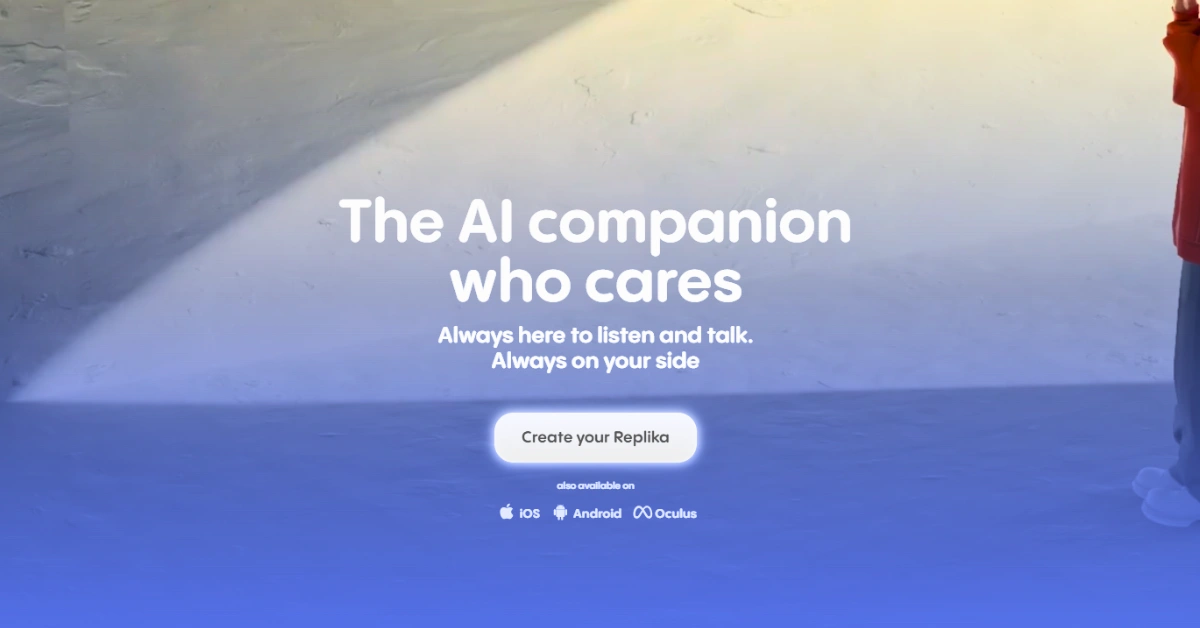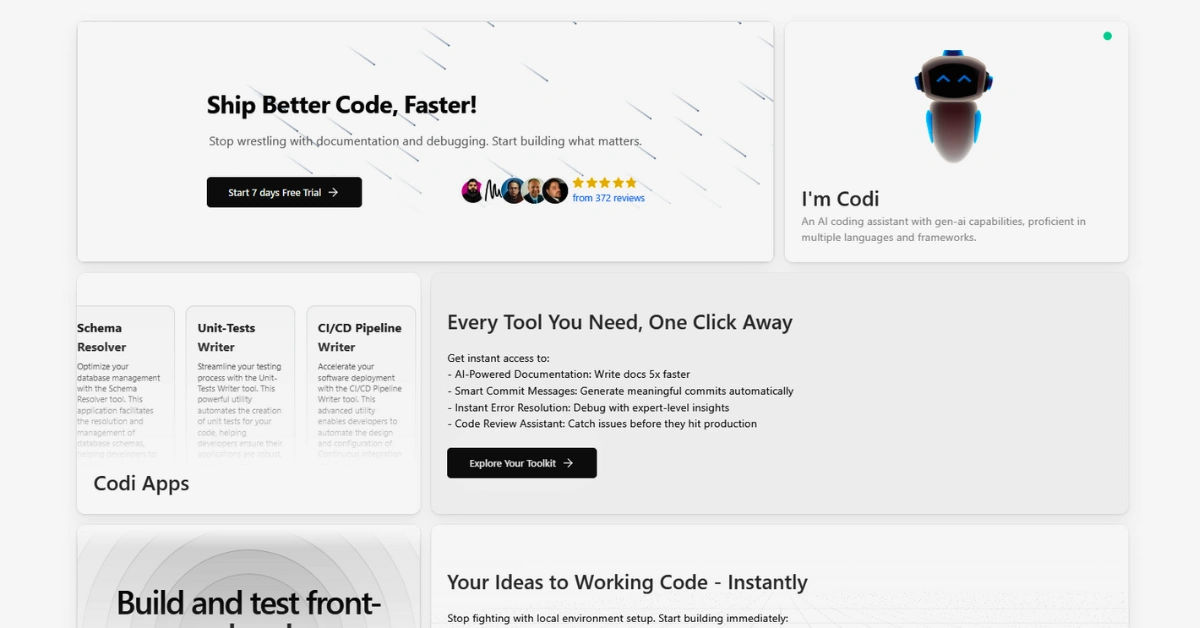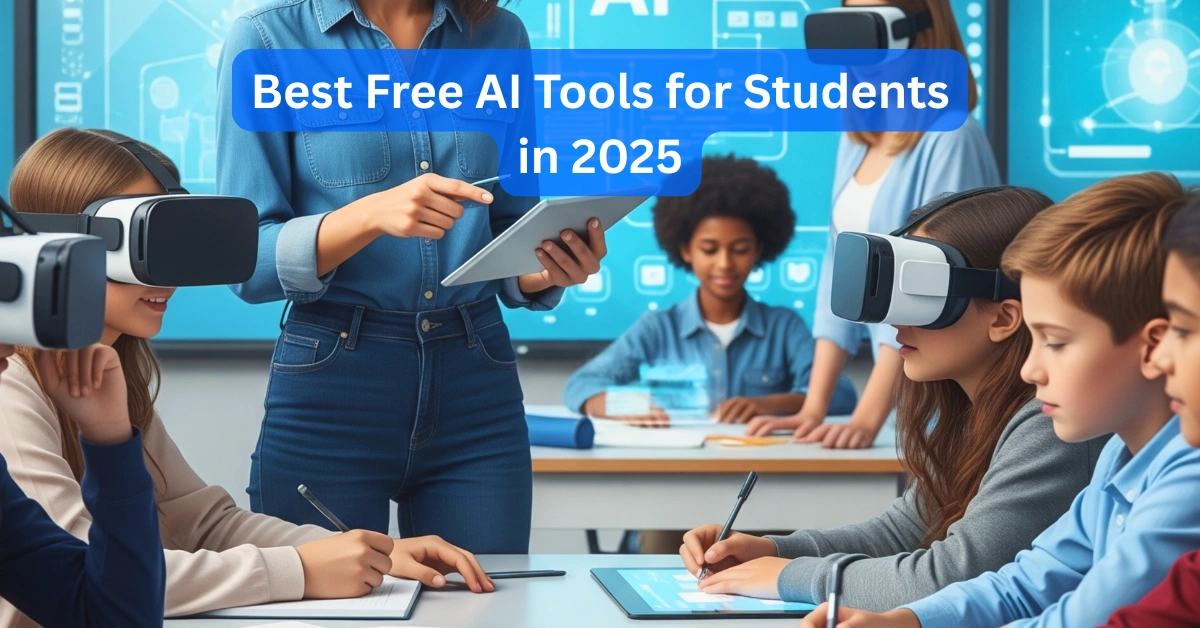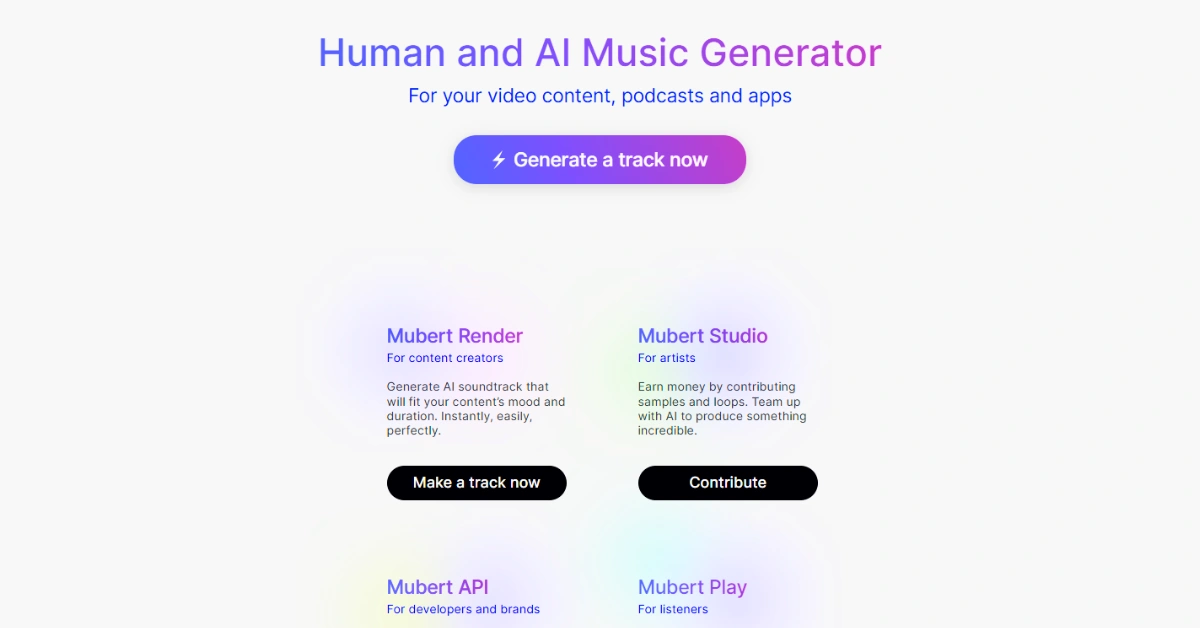The Use of AI in Education: Applications, Benefits & Future
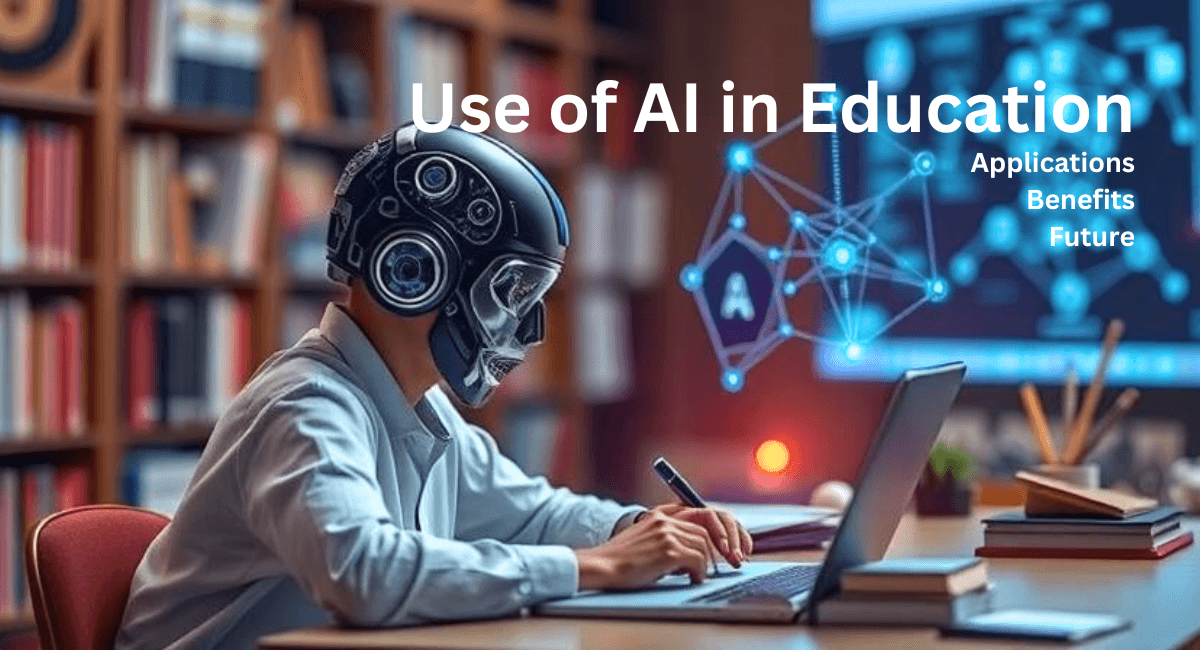
The word AI is not a term that we can relate only to the tech landscape; it is changing the dynamics of every industry, from tech, finance, and healthcare to the education sector. The use of AI in education helps teachers automate tasks and provides personalized education to students.
It has enhanced productivity in education through adaptive learning platforms and virtual tutors to help students unlock new potential and lead the future of the AI world. Moreover, the AI-powered tools help teachers learn individual learning patterns and provide predictive analytics to design tailored resources for students’ needs.
Meanwhile, AI’s use in education brings some challenges, causing security and data privacy issues that overshadow its full potential to be explored. But it can be addressed with the required human touch as overreliance can negatively impact.
This article covers how AI is transforming the learning experiences and its evolving role in shaping the future. By learning AI’s role in education, you will explore new opportunities and unlock new potential to conquer an AI-driven world.
Artificial Intelligence in Education
AI in education is the way to transform the learning experience through intelligent algorithms, machine learning abilities, and data-driven technology. In education, it helps to provide personalized learning experiences. Moreover, it helps teachers in automating repetitive administrative tasks while they put more effort into strategic curriculum planning and student progress.
Evolution of AI in Education
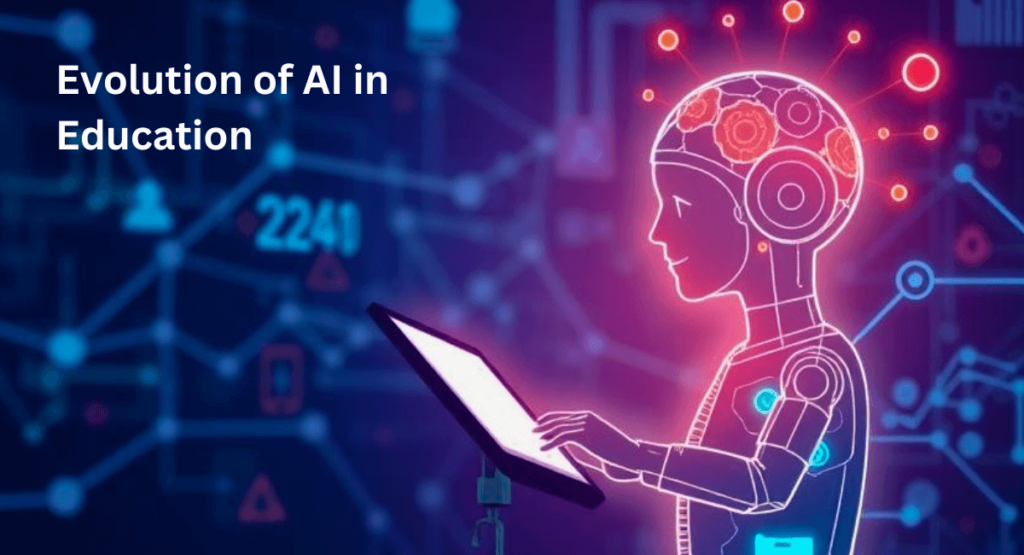
AI was incorporated into education at the beginning of the 20th century. It was initiated with the development of expert systems and computer-assisted learning, reaching its peak during the 2020 pandemic.
Here are the key developments of AI in the education sector.
- The 1960s to 1980s period: The Intelligent Tutoring System (ITS) was developed to give an adaptive learning experience.
- 1990s to 2000s period: E-learning platforms and advanced algorithms were developed to provide personalized learning experiences to users with wider applications.
- 2010s to the present time: More AI-powered tools like Chatbots, virtual tutor systems, and advanced learning analytics systems were developed to enhance engagement in education and extend its accessibility.
Application and Use of AI in Education
AI’s integration in education revolutionizes the educational landscape by enhancing its efficiency and performance in delivering results. It solves the challenges of the education system by delivering quality content and making it accessible to a wider audience through its flexibility and various applications.

Personalized Learning for Better Outcomes
One of the significant uses of AI in education is offering students personalized learning. AI-powered platforms offer customized learning experiences to individuals by analyzing their behavioral patterns and needs. With these solutions, students can learn at their own pace and progress smartly.
Automating Administrative Tasks for Increased Efficiency
AI driven tools help in automating tasks that reduce the administrative burden, such as grading and attendance tracking for teachers. This will enable teachers to exert their effort on another strategic task while also maximizing efficiency and saving resources for best use.
Enhancing Accessibility Across the Globe
With AI, learning and getting an education are more accessible than ever. It offers enhanced accessibility in the educational field through advanced tools and solutions. With the help of generative AI, you can convert text to speech and translate languages. It also supports disabled learners by providing a better learning experience tailored to each individual. Moreover, with AI chatbots, you can seek information anytime, anywhere.
Data-Driven Insights for Improved Decision Making
AI incorporates vast data sets to improve the results. So in education, the data driven insights help teachers and educators to design strategies. Additionally, it also aids in refining the previous curriculum and suggesting plans for desired results in student learning.
Global Reach for Making Education Easy
Through its flexibility feature, AI tools make educational systems accessible to all regions, even in underprivileged areas. It provides various AI tools that offer AI tutoring agents and virtual assistants to teach students virtually and provide them with an immersive learning experience under limited resources to cater to their needs.
Benefits of AI in Education
Integrating artificial intelligence into education offers various benefits, that transform the landscape and help to enhance teaching and learning styles.
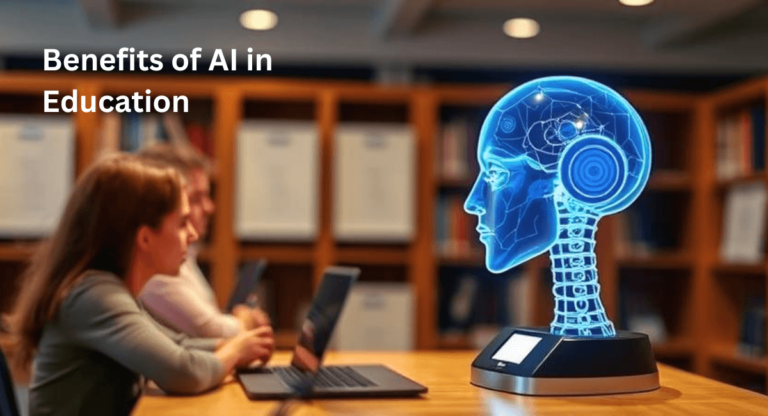
- Adaptive Learning: It gives students an adaptive learning experience by adjusting lesson difficulty and designing tailored content to fulfill their needs.
- Gamified Learning: AI enhances the learning experiences through advanced, realistic, and interactive content derived from immersive technologies like VR and AR.
- Real-time Analysis: It provides instant feedback and gives interactive exercises and virtual tutors to engage students.
- Cost-Efficient: AI integration reduces costs by optimizing resources. It saves the cost of books, infrastructure, and other materials by converting them into the virtual world.
- 24/7 Availability: It responds to students’ queries and solves their complex problems through AI solutions around the clock.
- Task Automation: AI has facilitated task operations through automated processes, as it helps in administrative functions like grading and attendance tracking to save resources.
- Curriculum Planning: It helps in curriculum and lesson planning to cater to evolving needs.
- Mitigating Language Barrier: AI bridges the gap in communication as it incorporates diversified cultural contexts and helps to translate courses into different languages, promoting fairness and inclusivity.
Case Studies of Successful AI’s Integration into Education
The real-world application of AI’s integration into the educational system shows how AI is reshaping the educational system and enhancing its performance. These given examples illustrate AI’s role in different educational systems to improve performance and increase efficiency in results.

AI-Powered Textbooks with South Korea’s Education
South Korea has developed AI-powered textbooks and other materials to advance personalized learning and improve students’ experiences. This AI integration of AI into South Korea’s education system helped to assess students’ progress and provided tailored content suggestions to meet students’ needs.
The step of AI incorporation within the education system improved South Korea’s education system and enhanced learning outcomes, saving time and other resources.
UAE’s Personalized Learning Programs
The UAE educational sector has adopted personalized learning programs that is integrated within both public and private educational systems. It helps to improve academic performance and engages students through customized curriculum design and self-paced learning approaches tailored to individual needs. This initiative resulted in improved student performance.
AI Mentorship in West Africa
West Africa in education uses Chatbots, different machine learning systems, and generative AI tools with the help of AI to provide 24/7 support to the students. These chatbots assist in guiding students belonging to underprivileged regions, where even teachers are not available.
Through this AI mentorship approach, Africa bridges the gap in the educational system and ensures academic consistency for an equitable, resilient, and innovative future for Africa’s youth to lead the AI-driven world.
Literacy Improvements in Brazil
Brazil has incorporated AI into education for better learning experiences and to support educational activities. It has integrated AI tools to enhance reading comprehension through gamified learning, content recommendations, speech recognition, and error detection.
All these measures are taken for better pronunciation, fluency, and to facilitate language translation. This initiative by Brazil of educational games, improved their literacy rate as everybody became able to learn by removing unnecessary barriers.
Challenges and Considerations of AI in Education
Besides the benefits and wide application of AI in education, several challenges are surfacing at the top. For successful and responsible AI development in education is necessary to address these concerns to build an inclusive and resilient AI system.

Data Privacy and Security
AI systems require large data sets that contain information linked to students’ personal and sensitive information, allowing access to unauthorized sources. So, to protect users’ privacy and data, strict compliance with laws must be followed to ensure trust among users and protect their data privacy.
By practicing these measures, academic integrity can also be ensured among stakeholders.
Equity and Access
It must be ensured that all students have access to AI-powered tools for educational purposes. Because of variability in infrastructure and lack of resources, some students can not benefit from AI and its technological tools. So, these gaps must be addressed to remove the educational divide.
Over-Dependency on Technology
Overreliance on AI can limit the ability of critical thinking, interpersonal, and communication skills.
It must be ensured that a balance is created for the effectiveness of AI in the system, along with human interference for optimizing performance.
Ethical Implications
Training on large data sets of AI algorithms can create biases in response. So, it should be checked that responses are unbiased and transparent through continuous monitoring.
To address this concern, during AI training and development, transparency and accountability must be ensured for equitable education.
Implementing AI in Education
For the successful implementation of AI in education, here are the key strategies and guidelines that should be ensured for AI’s maximized effectiveness.
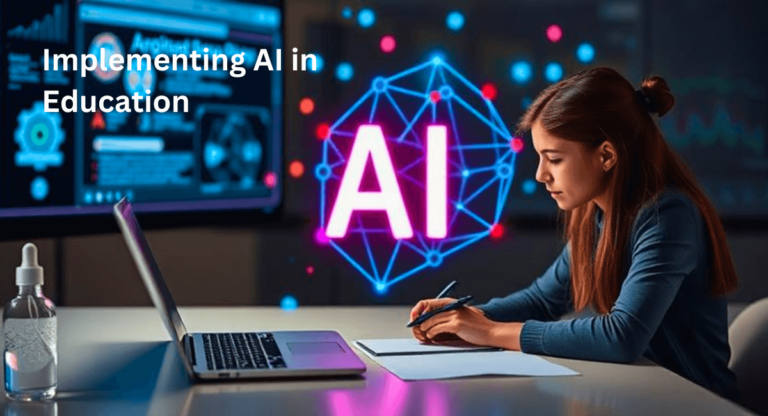
Key Strategies for Integrating AI into Curriculum
- Conduct a needs assessment for key areas identification where AI needs to be implemented.
- Start with pilot testing to test AI tools on a smaller level to see outcomes.
- Ensure that AI incorporation is aligned with the existing curriculum.
- Encourage collaboration among parents, teachers, and students during policy-making and key decision-making.
Balancing AI with Traditional Educational Methods
- Design a hybrid approach to incorporate AI with traditional teaching tips and methods for better interpersonal and creative skills.
- The key focus of AI implementation should be student-centric. It should not be used to replace the human workforce, but it should be used to enhance learning outcomes.
- Adapt flexibility and personalization to create a balance between AI and traditional approaches.
Ethical Guidelines for AI Integration in Schools’ Systems
- Promote transparency by communicating how AI works in operation and its training process.
- Improve AI algorithms to ensure responses are free from any biases or divides.
- Follow strict legal compliance to secure sensitive data.
- Set direct and clear rules for monitoring AI to ensure accountability to support AI’s application in education.
Future of AI in Education
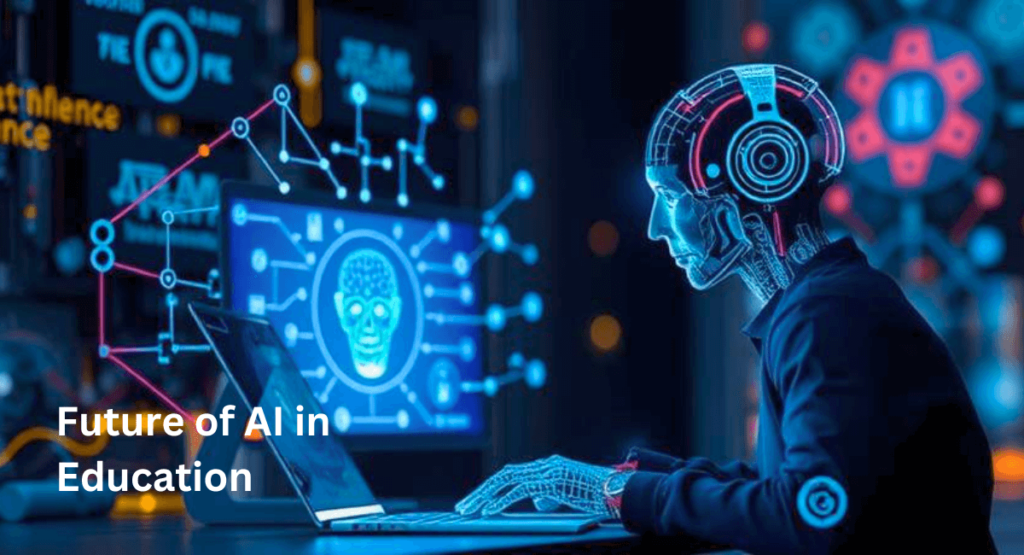
AI’s future in education is bringing transformation with its enhanced features of innovation, accessibility, personalization, and performance efficiency. The future is expected to be marked by AI’s continuous advancements and the emergence of new trends.
These emerging trends will include adaptive learning platforms, immersive technologies, and AI-driven tools. These solutions will provide better learning experiences with augmented and virtual reality technologies and provide instant feedback for student support.
Moreover, you will see the integration of AI into education with blockchain technology which helps to secure educational credentials. It will be adopted globally to advance the education system, while ensuring ethical standards, as it is necessary to prioritize the safe and responsible use of AI and reduce algorithm biases.
AI must be integrated into education by following standardized ethical policies along with innovative tools for equitable and impactful education artificial intelligence experiences for all, globally. With the advancements of these new AI technologies, the education landscape is redefined.
Conclusion
In short, Artificial Intelligence is redefining the educational landscape by enhancing learning experiences and giving personalized, innovative, and advanced teaching approaches. From AI tutors, chatbots, to personalized learning platforms, and an automated grading system, the use of AI in education is enormous.
Alongside, some challenges such as data security and ethical concerns might need to be addressed, as they may hinder AI effectiveness. To address these challenges, set clear ethical standards and strategies, and monitor AI continuously to mitigate any bias and error.
In a nutshell, AI is a reality shaping the educational sector, and to keep pace with it, you need to implement innovative technologies over traditional educational approaches.
Frequently Asked Questions
How is artificial intelligence used in education?
- It is used in education to provide adaptive learning experiences. It helps to automate tasks, provide real-time feedback, and enhance personalized learning outcomes.
What are the benefits of AI in education?
- AI offers various benefits through its advanced AI tools like AI chatbots, tutors, and virtual assistants. These tools provide personalized learning and assist in answering several queries 24/7.


